|
The Democratic and Republican Presidential Conventions are now over and the sprint to the November 3rd election begins. As painful as it was, I watched all four nights of each convention and have some opinions on what I saw. With the country still in the throes of the coronavirus pandemic, it was the best opportunity for each candidate to make their pitch to a mass audience. Watching the conventions one after the other had me wondering whether the two parties were talking about the same America. The portrait of America painted by each candidate and their place in it, could not have been more different. It can best be described by that keen chronicler of the human condition Charles Dickens, “It was best of times, it was the worst of times, it was the age of wisdom, it was the age of foolishness, it was the epoch of belief, it was the epoch of incredulity, it was the season of light, it was the season of darkness, it was the spring of hope, it was the winter of despair, we had everything before us, we had nothing before us, we were all going direct to Heaven, we were all going direct the other way…..” The firework displays have ended and the fact checks have all been made. Now we will take a look at the value of conventions, the highlights from the eight nights, and examine whether or not each candidate accomplished what they set out to achieve. Since 1832 every major political party has held a national convention to nominate its presidential candidate. Primary elections did not exist until the 20th century, so the main purpose of the convention was to select the party’s candidate for president. FDR was the first president to accept the nomination in person at the 1932 Democratic Convention. It wasn’t until 1972 that primary elections determined who each party’s candidate for president would be. Today, the conventions are mainly celebratory events and the nomination of the party’s candidate for president is a mere formality. Party business is conducted during the convention, but what the public sees on TV is a celebration of the party faithful and a major promotion of the nominee. Due to coronavirus pandemic, both conventions were delayed by about one month and for the most part they were conducted remotely. This race is going to be a lot closer than the polls and talking heads currently predict. Biden should comfortably win the popular vote, but I think the Electoral College will determine who the next president will be. Therefore, the swing states of Florida, Michigan, Pennsylvania, and Wisconsin will be receiving a lot of attention by the candidates. Even before the conventions, most voters had already decided who they will vote for in November. About 13% of the voters are still up for grabs, and it is this group that the candidates will hope to sway through their convention messaging. This post will focus on the Democratic Convention and the next on the Republican Convention. Democratic National Convention: The convention took place on August 17-20, and officially took place at the Wisconsin Center in Milwaukee. While the convention was choreographed from Milwaukee, it was mostly held remotely from various venues across the country. Joe Biden and Kamala Harris gave their acceptance speeches remotely from the Chase Center in Wilmington, Delaware. The overall theme for the convention was “Uniting America”. Biden’s Goals for the Convention:
So began four days of personalizing Joe Biden and slamming Donald Trump for his response to the coronavirus pandemic and his divisive policies. A major objective of the first day of the convention was to unify the party. All of the major candidates who had run against Biden in the primaries were featured. Bernie Sanders gave a forceful endorsement of Biden and urged his supporters to rally behind Biden to “remove the most dangerous president in history”. Several Republicans spoke in favor of Joe Biden, most notably former Ohio Governor John Kasich who said that Donald Trump had betrayed the principles of the Republican Party. Kristin Urquiza gave a moving tribute to her father Mark, who had died from COVID-19. Her father was a Trump supporter who had listened to the president downplay the virus. In one of the best lines of the night, Kristin said of her father, “His only preexisting condition was trusting Donald Trump, and for that he paid with his life”. The best speech of the night was delivered by Michelle Obama who gave a scathing assessment of Donald Trump. She said that rather than providing steadiness, the president only delivered chaos, division, and a total and utter lack of empathy. She continued, “Donald Trump is the wrong president for our country. He has had more than enough time to prove that he can do the job, but he is clearly in over his head. He cannot meet this moment. He simply cannot be who we need him to be for us. It is what it is.” Highlights from Day Two: The program was emceed by actress Tracee Ellis Ross and the theme was “Leadership Matters”. Joe Biden was nominated by Jacquelyn Asbie, a security guard who Biden had met in an elevator. It was a nice touch highlighting Biden’s connection with regular people and his common decency. Acording to Asbie, “In the short time that I spent time with Joe Biden, I could tell he really saw me, that he really cared, that my life meant something to him”. The nomination was seconded by Delaware Senator Chris Coons and Rep. Lisa Blunt Rochester. The highlight of the evening for me was the “Roll Call Across America”. The prerecorded roll call took us to all 57 states and territories as we watched each officially cast their votes to nominate Joe Biden. It was a visual journey across the country showcasing the nation’s geographic diversity, natural beauty, historic sites, cultural traditions, and its people. Featured speakers included Jimmy and Rosalynn Carter, Bill Clinton, Caroline Kennedy, Alexandria Ocasio-Cortez, John Kerry, Chuck Schumer, Colin Powell and Jill Biden. A few notable lines from Clinton’s speech were: “Joe helped bring us back from a recession before and he can do it again”, and “Trump would blame, bully and belittle, and Biden would build back better”. Former Secretary of State Colin Powell, a republican, further bolstered Biden’s bipartisan credentials and his leadership capabilities. According to Powell, “On day one Joe Biden will restore American leadership”. A film narrated by Cindy McCain showed the friendship between her husband, the late GOP Senator John McCain, and Joe Biden. The film highlighted Biden’s humanity and his ability to work across the aisle. The final speaker of the night was Biden’s wife Jill. She gave her speech live from a classroom at Brandywine High School in Wilmington, Delaware where she taught English in the 1990s. She took us through Joe’s life and the tragedies which shaped him. It was a passionate and personal account of Joe Biden that many have not seen. According to Jill, “Joe knows how to make a broken nation whole, because he has done the same in his own life through several tragedies”. It was a warm and effective speech. Highlights from Day Three: The program was emceed by actress Kerry Washington and the theme was “A More Perfect Union” (Sub-Themes: “A More Perfect Society” and “A More Perfect Economy”). Kamala Harris was nominated as Vice President which she formally accepted. Of the many speakers on this day the most notable were Gabby Giffords, Hillary Clinton, Nancy Pelosi, Elizabeth Warren, and Barack Obama. Gabby Giffords, the former Arizona Representative, was severely injured when she was shot several times in 2011. She gave a brave and powerful address on her struggles to recover from her injuries and on her ongoing fight against gun violence. Hillary Clinton urged everyone to vote and to convince everyone you know to vote for Joe Biden. “We need numbers so overwhelming Trump can’t sneak or steal his way to victory. Vote like our lives and livelihoods are on the line, because they are”. Barack Obama made perhaps the best speech of the convention. It was the most passionate that I have ever seen him. His condemnation of Trump was blistering and downright visceral. Some of the highlights from the speech include: “Donald Trump hasn’t grown into the job because he can’t”. “This administration has shown that it will tear our democracy down if that’s what it takes to win”. “He’s shown no interest in putting in the work; no interest in finding common ground; no interest in using the awesome power of his office to help anyone but himself and his friends; no interest in treating the presidency as anything but one more reality show that he can use to get the attention he craves”. Phew! Take that Donald. Kamala Harris formerly accepted the nomination for Vice President and gave her acceptance speech live from the Chase Center in Wilmington, Delaware. In one notable line she said, “There is no vaccine for racism. We have got to do the work”. After her speech she was greeted onstage by her husband Douglas Emhoff and Joe and Jill Biden. Highlights from Day Four: The program was emceed by actress Julia Louis-Dreyfus and the theme was “America’s Promise”. I thought that Louis-Dreyfus’ attempts at comedy mostly missed the mark, and seemed out of place. This was another night to beat up on Trump and to show the empathetic and generous side of Joe Biden. Of the many speakers, the most notable were Andrew Young, Cory Booker, Pete Buttigieg, Michael Bloomberg, Ashley Biden, Hunter Biden, Ed Good, Brayden Harrington and Joe Biden. A tribute video to Biden’s son Beau was very moving, but I thought a little overdone and unnecessary. A video of Joe Biden’s granddaughters discussing their grandfather was very effective. The final video sequence of the evening leading up to Joe Biden’s acceptance speech was from Stephen Curry and his young family. It was odd, out of place, and left me scratching my head. Some of the most memorable moments of the evening included remarks from Ed Good, a 95-year-old veteran of WWII and Korea. He is former Trump voter and member of the NRA and said, “I think Trump has been the worst president we’ve ever had, so I’ll be glad to see him go”. Michael Bloomberg delivered the most scathing critique of Donald Trump. Said Bloomberg, “When confronted with the biggest calamity any president has faced in the modern era, Donald Trump spent the year downplaying the threat, ignoring science, and recommending quack cures, which let COVID-19 spread much faster than it should’ve, leaving hundreds of thousands needlessly sick or dead. He has failed the American people catastrophically”. He finished by saying “I’m not asking you to vote against Trump because he’s a bad guy. I’m urging you to vote against him because he’s done a bad job”. One of the most poignant talks came from 13 -year-old Brayden Harrington. Brayden stutters, an affliction that Joe Biden has overcome. They met during the primaries and Biden had related to him about his own struggles. Biden shared with Brayden some strategies on how he might overcome his stutter. According to Brayden, “I’m just a regular kid, and in a short amount of time, Joe Biden made me more confident about something that’s bothered me my whole life. Joe Biden cared”. Brayden showed incredible courage to share his story with a national audience, and it really highlighted the character of Joe Biden. Joe Biden delivered his acceptance speech live from the Chase Center in Wilmington, Delaware. The speech highlighted Donald Trump’s shortcomings but never mentioned him by name. He noted that “Character is on the ballot. Compassion is on the ballot. Decency, science, democracy. They are on the ballot”. Biden outlined his vision for America without getting too specific. He portrayed himself as the best candidate to combat overlapping economic and healthcare crises, and promised to “draw on the best of us, not the worst and be an ally of the light, not the darkness”. It was not an Obama speech, but it was delivered with energy, it was coherent, thoughtful, and generally upbeat. Therefore it was a success. After the speech Joe Biden was joined onstage by his wife Jill and Kamala Harris and her husband, all wearing face masks. The evening and the convention ended with a firework display outside of the Chase Center. They were joined by a number of people outside of the center, who had been invited to watch the festivities from the comfort of their own vehicles. Did Biden Achieve his Convention Goals?
Overall, I thought that the Democrats used the virtual format to their advantage. It allowed for a variety of voices to be heard. I particularly liked hearing from ordinary Americans rather than from convention delegates hyped up on free booze, carbs and groupthink. The combination of prerecorded videos, music, and speeches worked well. I didn’t like the fact that the emcess were Hollywood actresses. It took away from the message and the Democrats missed a great opportunity to feature some up and coming stars in their own ranks. I also didn’t like all the attention showered on Beau Biden. It came across as a canonization. I feel sorry for Biden’s other kids who have to live in the shadow of St. Beau. I get that Biden has experienced and overcome hardships in his life, but this was overdone. Now it is time for the Biden campaign to kick it into high gear, get out on the road, and counter the alternative facts coming out of the Republican convention. I will devote the next post to the Republican Convention. If you enjoy reading this type of commentary please subscribe to my blog and tell a friend. You will receive an email notification when new blogs are posted. The email will come from the site’s email: [email protected]. Thanks, Armchair American
1 Comment
QAnon is a story that involves the dark web, secret cabals, cryptic messages, biblical prophecies, digital warriors, diabolical villains, conspiracy theories, and presidential politics. Some have called QAnon a cult, a political movement, a burgeoning new religion, and the conspiracy theory du jour. In some respects, it could be any, or all of those things. Or it could be a fantastical experiment of mass manipulation by a rogue social scientist, or rogue state. So, what is it and why should we care? QAnon has induced acts of violence and made its way into national politics, and therefore it warrants our attention. What is QAnon: An “anon” is a person posting on the internet anonymously. “Q” is an unknown person or persons who claims to have a Top Secret “Q clearance” in the government. We first heard from the anonymous Q with a cryptic post on October 28, 2017 on a forum thread called “Calm Before the Storm”, on the website “4chan”. 4chan lives on the fringes of the internet where anonymity rules, and conspiracy theories and illicit activities run rampant. The QAnon conspiracy theory appears to have morphed out of several other “anon” postings, such as “FBIAnon”, “CIAAnon”, “WH Insider Anon”, and “High Level Insider Anon”. These posters were all pro-Trump, and perpetrated many false claims and derogatory comments about Hillary Clinton in the runup to the 2016 presidential election. During October 2016, websites such as 4chan helped to spread the conspiracy theory known as “Pizzagate”. In case you have forgotten about this little piece of hilarity, it was a far-right theory that Hillary Clinton was running a child sex ring out of the basement of a pizzeria called Comet Ping Pong. This theory got a lot of buzz on the far reaches of the internet and has never gone away. The QAnon theory contends that a secret shadow government, known as the “deep state”, is controlled by Hillary Clinton, Barack Obama, George Soros, and a cabal of global liberal elites. According to the theory, the deep state runs a global child sex trafficking ring, and practices satanism, cannibalism and other evils. Sound plausible? In the QAnon theory, Donald Trump is a lone heroic warrior, elected to defeat the deep state. It is up to the mysterious Q to tell the world about Trump’s top-secret war against the deep state, and to rally support behind the president. The eventual destruction of the global cabal can only be accomplished with the support of patriots who search for meaning in Q’s clues (Q Drops). Q has posted over 2000 times to the image boards of 4chan, 8chan, and 8kun. 8 chan was shut down for promoting violence and misinformation, and now most of Q’s posts appear on the website 8kun. Investigative journalists from NBC News dug into the origins of Q and QAnon. (https://www.nbcnews.com/tech/tech-news/how-three-conspiracy-theorists-took-q-sparked-qanon-n900531). The investigation determined that three people took the original Q post and expanded it across multiple platforms to build internet followings for profit. This seems to me to be the most likely scenario. The three individuals involved deny this, and the identity of the original Q remains a mystery. QAnon Philosophy: QAnon rejects mainstream institutions, ignores government officials (they are corrupt), despises mainstream media for spreading “Fake News”, and champions unfettered free speech on the internet. Some of Q’s favorite topics include God, Pizzagate, the wickedness of the elite, the mass hysteria over the coronavirus (promoted by the Democrats to dethrone President Trump), and Dr. Fauci (a deep state puppet). The rallying cry for QAnon followers is “WWG1WGA” (where we go one, we go all). It’s an expression of solidarity which celebrates unity and patriotism. Other favorite Q themes that followers have rallied around include:
QAnon followers are not a simple homogeneous group, and the motives of its adherents are divergent. The many twists and turns to the theory have appeal to many, particularly conspiracy theorists. But most followers are clearly right-wing and pro Trump. One major group of followers focuses on the religious aspects of QAnon. In the language of evangelical Christians, Q quotes bible verses and promotes the Great Awakening. The other major group of followers clings to the notion of the deep state, with Q being a government insider helping Trump to defeat it. They see significance in words beginning with the letter Q spoken or tweeted by Donald Trump. According to Jared Holt, a researcher for Right Wing Watch, the QAnon theory “provides Trump’s most fervent supporters a way to explain away any scandal or slip-up the president may face”. Even typo filled tweets and incoherent rambles are viewed as proofs that the president is in on the conspiracy. It solidifies a portion of Trump’s base that will not be swayed by anything that he says or does. QAnon Goes Mainstream: Q may be anonymous, but the QAnon movement certainly isn’t. In a few short years QAnon has grown from a few fringe chat rooms and message boards to nearly every major social media and commercial platform on the internet. It encompasses a massive international universe of blogs, proprietary websites, podcasts, and all the mainstream social media platforms, including Redditt, Twitter, YouTube, Instagram, TikTok and Facebook. According to an investigation conducted by NBC News, Facebook has been key to QAnon’s growth, mainly through its “Groups” feature. A recent internal Facebook investigation has uncovered thousands of groups and pages, with millions of members and followers that support QAnon. (https://www.nbcnews.com/tech/tech-news/qanon-groups-have-millions-members-facebook-documents-show-n1236317). QAnon is not just active in the United States. According to an investigation by the Guardian, there are active groups of QAnon followers all over Europe, Australia, South America, Canada, Mexico, and several of the former Soviet bloc countries. (https://www.theguardian.com/us-news/2020/aug/11/qanon-facebook-groups-growing-conspiracy-theory). Along with the massive social media presence, entrepreneurs are cashing in on the QAnon movement. Many are generating revenue from their podcasts, YouTube channels, apps, books, newsletters, and social media platforms dedicated to QAnon. There are others selling millions of dollars worth of Q and QAnon branded merchandise online and at right-wing campaign rallies. Just Google “QAnon merchandise” and you’ll find your pick of hats, T-shirts, belt buckles, coffee mugs, buttons, stickers, and baby bibs! QAnon gets a Political Endorsement: August 19, 2020 will hold a special place on the QAnon calendar going forward. President Trump has occasionally retweeted posts from QAnon affiliated accounts, but this is the first time that he directly responded to questions about QAnon. At a news conference, the president was asked about the QAnon movement, to which he responded, “I don’t know much about the movement, other than I understand they like me very much; which I appreciate.” He went on to say that “I heard these are people who love our country.” When told by the reporter the basic premise behind the QAnon theory, the president responded by asking “Is that supposed to be a bad thing or a good thing? If I can help save the world from problems, I’m willing to do it. I’m willing to put myself out there. And we are actually saving the world…” As you can well image, within minutes QAnon affiliated social media accounts across the world came to life to celebrate Trump’s comments as validation of their views. (https://apnews.com/535e145ee67dd757660157be39d05d3f). QAnon supporters have been showing up at Trump rallies since 2018. But only in recent months has their political influence been felt. According to Brian Dunning of the “Skeptoid Podcast”, at least 60 candidates running for Congress had expressed their belief that QAnon is real. Last week QAnon adherent and self-described Islamophobe Laura Loomer, won the GOP nomination for Florida’s 21st Congressional District. Earlier this month Marjorie Taylor Green won the GOP nomination for Georgia’s 14th Congressional District. Ms. Green is a vocal supporter of QAnon and has racist views condemned by many mainstream Republicans. (https://www.washingtonpost.com/politics/2020/08/11/marjorie-taylor-greene-georgia-qanon/ ). Both women received praise and congratulations for their victories by President Trump. As the politics of QAnon goes mainstream, there are thousands of digital soldiers behind the scenes using social media and fringe message boards to wage information warfare. They are intent on influencing the 2020 elections to keep Donald Trump in power. How many of these QAnon social media accounts do you think are run by trolls controlled by the Russian government? Many I would suspect. The Darkside: Yahoo News disclosed the existence of an FBI intelligence bulletin, dated May 30, 2019, which described conspiracy theory-driven domestic extremists as a growing threat. (https://news.yahoo.com/fbi-documents-conspiracy-theories-terrorism-160000507.html). One of the prominent conspiracy theories mentioned in the bulletin was QAnon. The bulletin warns that these conspiracy theories may very likely motivate some domestic extremists to engage in criminal or violent behavior. So, what landed QAnon on the FBI domestic terrorism bulletin? The FBI cited a number of arrests related to QAnon in which death threats and acts of violence were involved. These included an armed stand off between Matthew Phillip Wright and police at the Hoover Dam, and the murder of mob boss Frank Cali at the hands of a QAnon follower. Several social media platforms have been pushing back against QAnon affiliated groups since 2018. Reddit banned several QAnon groups from its platform in 2018 for inciting violence, harassment, and the dissemination of personal information. In July of this year Apple pulled the very popular app “QDrops” from the App Store after it learned more about the conspiracy theory. On July 21, 2020 Twitter announced that it was banning over 7,000 QAnon accounts for breaking its rules around platform manipulation, misinformation and harassment. This is the strongest action yet against QAnon, and Twitter stated that it would no longer recommend QAnon accounts and content, stop such content from appearing in trends and search, and would block QAnon internet links. (https://www.nbcnews.com/tech/tech-news/qanon-groups-have-millions-members-facebook-documents-show-n1236317). In July TikTok disabled the two most popular QAnon hashtags on its platform. But Facebook is the elephant in the room when it comes to the spread of QAnon. It removed a few accounts and groups in May for “suspected coordinated inauthentic behavior” ahead of the 2020 presidential election. This week Facebook announced that it will restrict QAnon (and other right-wing groups) and will no longer recommend that users join groups supporting it. Short of an outright ban, Facebook said it will only remove groups and accounts outright if they discuss potential violence. Facebook said it is not banning QAnon because the group does not meet rigorous criteria for the platform to designate it a “dangerous organization.” But it is expanding this policy to address the movement because it has “demonstrated significant risks to public safety.” (https://www.latimes.com/world-nation/story/2020-08-19/facebook-bans-some-but-not-all-qanon-groups-accounts ). So for now, QAnon will continue to proliferate on Facebook and Instagram (owned by Facebook). As one account is shut down others pop up somewhere else on the internet, and this is the key to its growth. There is a lot more to the QAnon story. Who is this mysterious Q character? How did the QAnon conspiracy theory explode in just a few short years? Who believes in this stuff and why? Most importantly, why doesn’t President Trump distance himself from QAnon, and how much influence will it really have on the upcoming election? From its humble beginnings as a scheme to garner internet traffic, millions of like-minded people have found a rallying point in QAnon.
For a deep dive into the origins of QAnon and who the mysterious Q may be, I refer you to articles referenced above by the NBC News investigative team and the article from The Atlantic. If you enjoy reading this type of commentary please subscribe to my blog and tell a friend. You will receive an email notification when new blogs are posted. The email will come from the site’s email: [email protected]. Thanks, Armchair American Public Health Should be Above Politics. Was a Line Crossed in Favor of Black Lives Matter Protests?8/15/2020 As was established in the last blog post, public health authorities have broad powers under the constitution to restrict individual liberty to combat a health crisis. However, these restrictions must be applied fairly, without prejudice to content or viewpoint. Black Lives Matter protests have been taking place across the country for over two months, in apparent violation of social distancing and public gathering restrictions. Have the public health authorities crossed the “neutral” line? In the wake of the George Floyd killing by Minneapolis police, demonstrations against police brutality have erupted across the country. Black Lives Matter protests took place in cities large and small. This became real to me when protests shut down Highway 101 running through the middle of Santa Rosa, on the evening of June 5. Unable to make it home on the 101, I took an alternative route through the city’s downtown. I soon ran into the middle of a group of people marching through the city chanting “Black Lives Matter”. The protest was peaceful and I never felt threatened. Several nights of protests followed in the downtown area. Some looting and vandalism did occur late at night, long after most of the peaceful protestors had left. All this got me thinking “what about the public health orders put in place to stop the spread of the coronavirus”? There were orders in place to restrict outdoor gatherings to 100 attendees, as well as social distancing and face covering requirements. I reached out to city and county officials for answers, but never received any. My city was not alone. Major protests and marches were taking place in Milwaukee, New York, Washington DC, Seattle, Denver, Portland, San Francisco, Los Angeles, Philadelphia, and in hundreds of cities across our country. COVID-19 was no longer public health enemy number one. It had been replaced by police brutality and systemic racism. Many public officials took part in the protests, including the mayors of Minneapolis and Washington DC, chiefs of police, including the one in my city, and the Governor of New Jersey Phil Murphy. But most of these protests were taking place in cities which restricted public gatherings to 50-100 people. Social distancing and facial covering mandates were in place as well. This is why shouts of “liberal hypocrisy” started to be heard (https://www.politico.com/news/2020/06/06/conservatives-charge-liberals-with-social-distancing-hypocrisy-304435). Opponents of New Jersey Governor Murphy claimed that he was violating his own executive order by picking winners and losers by blurring the line between protests “worthy of participation and those deserving prosecution”(https://www.fox5ny.com/news/nj-governor-questioned-about-attending-rallies-during-stay-at-home-order Apparently not all protests are created equal. Conservatives have pointed out that lockdown protests during April and May were prohibited by public health officials because they violated social distancing and public gathering restrictions. But the protests against police brutality, which began in late May, appear to be condoned by the public health community. Even though these recent protests have occurred as many cities began lifting stay-at-home restrictions, and many of the protestors wore face coverings, there is much evidence in support of the conservative view. A national group of 1,288 health professionals signed the “Open letter advocating for an anti-racist public health response to demonstrations against systemic injustice occurring during the COVID-19 pandemic”. The open letter (https://drive.google.com/file/d/1Jyfn4Wd2i6bRi12ePghMHtX3ys1b7K1A/view) states “white supremacy is a lethal public health issue”, and “in addressing demonstrations against white supremacy, our first statement must be one of unwavering support for those who would dismantle, support, or reform racist institutions”. The open letter further states that “as public health advocates, we do not condemn these gatherings as risky for COVID-19 transmission. We support them as vital to the national public health and to the threatened health specifically of Black people in the United States”. The open letter also spells out why the Black Lives Matter protests are different than the earlier protests against stay-at-home orders. The American Public Health Association declared systemic racism a public health crisis at the beginning of June. Soon after, Colorado, Wisconsin and Michigan, along with cities in several other states, have declared systemic racism to be a public health emergency or crisis (https://www.apha.org/topics-and-issues/health-equity/racism-and-health/racism-declarations). One of the key justifications for these declarations is that COVID-19 has affected communities of color at a disproportionate rate. I think that the public health community is justified in shining a light on systemic racism. It has clearly led to many inequities in our society, particularly in areas of housing, education and health outcomes. According to recent polls, most Americans support the views of the Black Lives Matter protests (https://news.gallup.com/poll/316106/two-three-americans-support-racial-justice-protests.aspx).
But, is there legal justification to favor one form of protest over another? Probably not. But that’s for the courts to decide. Even though public health officials have broad constitutional powers during health emergencies, there are limits. Consider this: people are shot and killed on a daily basis in several of our major cities, namely Detroit and Chicago. Why not just declare public health emergencies in these cities and ban guns outright? Gun violence is clearly a public health crisis, and public health officials have broad authority under such conditions. Unfortunately, this won’t happen. The gun culture in American is as deeply rooted as is systemic racism, and constitutionalists wouldn’t allow it. Gun violence is another epidemic that needs to be tackled, but that’s an issue for another day. Mass gatherings of people, regardless of how righteous the cause, increases the risk of spreading COVID-19. As we have seen, many people in public health feel that getting the message out about systemic racism is worth the risk. The early restrictions put in place to stop the spread of COVID-19 were backed up by science. It appears that by allowing Black Lives Matter protests to continue, science has taken a backseat to political considerations. I’m afraid that many public health officials have undermined their credibility by messaging that certain behaviors can be sanctioned if the cause is just. Public health should be above politics. You may feel that public health officials are justified in favoring the Black Lives Matter protests. That’s for you, and perhaps the courts to decide. But what is clear, is that the partisan divide over the coronavirus response has widened. Messaging about actions to defeat the virus has become more confused, and trust in the Public Health System may have been diminished. This certainly doesn’t help at a time when a united, clear, and coherent plan to deal with the pandemic is needed. The COVID-19 pandemic is far from over. I just hope that the public continues to listen to and heed the advice of our public health experts. If you enjoy reading this type of commentary please subscribe to my blog and tell a friend. You will receive an email notification when new blogs are posted. The email will come from the site’s email: [email protected]. Thanks, Armchair American The First Amendment to the U.S. Constitution guarantees basic rights or freedoms to the people of the United States. They are the freedom of religion, freedom of speech, freedom of the press, the right to peaceably assemble, and the right to petition the Government. In recent months Public Health Departments, in conjuction with state and local officials, have among other measures, placed restrictions on public gatherings and religious gatherings. Doesn’t that violate our constitutionally guaranteed rights? The short answer is, not always. Let’s take a look. There are many cases winding their way through the courts, challenging governors in various states who have put restrictions in place to stop the spread of COVID-19. Most of the cases challenge restrictions placed on houses of worship in violation of the First Amendment’s freedom of religion clause. The other significant group of cases challenge restrictions limiting peaceful protests and other gatherings, in violation of the First Amendment’s right to peaceably assemble. In order to determine the constitutionality of pandemic restrictions placed by the various states, we have to turn to the Supreme Court. The first coronavirus related case to be ruled on by the Supreme Court was South Bay United Pentecostal Church V. Newson, No. 19A1044 (May 29, 2020). The church had filed a lawsuit against California Governor Gavin Newsom after he put in place an Executive Order limiting attendance at places of worship to 25% of building capacity or a maximum of 100 attendees. The church claimed that this violated their First Amendment rights. The Supreme Court rejected the church’s claim, and upheld Governor Newsom’s right to place restrictions on in-person religious services in an attempt to control the spread of the coronavirus. But how can that be? It is a clear case of government restricting the free exercise of religion. Here’s what Chief Justice Roberts had to say in his majority opinion: “The Governor of California’s Executive Order aims to limit the spread of COVID-19, a novel severe acute respiratory illness that has killed thousands of people in California and more than 100,000 nationwide. At this time, there is no known cure, no effective treatment, and no vaccine. Because people may be infected but asymptomatic, they may unwittingly infect others. The Order places temporary numerical restrictions on public gatherings to address this extraordinary health crisis”. The opinion further states that “…those restrictions appear consistent with the Free Exercise Clause of the First Amendment. Similar or more severe restrictions apply to comparable secular gatherings, including lectures, concerts, movie showings, spectator sports, and theatrical performances, where large groups of people gather in close proximity for extended periods of time”. The California order was neutral regarding its treatment of all in-door gatherings, religious and secular, and therefore lawful. For a full reading of the Supreme Court opinion go to: https://www.supremecourt.gov/opinions/19pdf/19a1044_pok0.pdf . This case has wider implications over the debate regarding coronavirus restrictions. According to the Roberts’ opinion, “Our Constitution principally entrusts the safety and health of the people to the politically accountable officials of the States to guard and protect.” Roberts is citing here a precedent established by Jacobson v. Massachusetts, 197 U.S. 11, 38 (1905). This case upheld the authority of states to enforce compulsory vaccination laws because the regulation in question was “necessary in order to protect the public health and secure the public safety”. The decision further explained that individual liberty is not absolute and is subject to the police power of the state. “There are manifold restraints to which every person is necessarily subject for the common good. On any other basis organized society could not exist with safety to its members. Society based on the rule that each one is a law unto himself would soon be confronted with disorder and anarchy”: https://tile.loc.gov/storage-services/service/ll/usrep/usrep197/usrep197011/usrep197011.pdf . Roberts opinion continues: “When those officials undertake to act in areas fraught with medical and scientific uncertainties, their latitude must be especially broad. Where those broad limits are not exceeded, they should not be subject to second-guessing by an unelected federal judiciary which lacks the background, competence, and expertise to assess public health and is not accountable to the people.” The bottom line is, the courts are going to defer to elected officials in the states to determine how best to protect the health and safety of its citizens during the pandemic. According to Christopher Dunn of the New York Civil Liberties Union, Jacobson V. Massachusetts will be the case that frames all litigation around coronavirus-based restrictions on public gatherings. What happens when the government starts rolling out a coronavirus vaccine later this year or next year? Can the government force me to take it? In a word, yes. Jacobson v. Massachusetts specifically states that “It is within the police power of a State to enact a compulsory vaccination law, and it is for the legislature, and not for the courts, to determine….”. There are specific exemptions to vaccination laws which I will address in a future blog post.
The Supreme Court has also rejected lawsuits from churches in Illinois and Nevada looking to strike down coronavirus restrictions. Does this mean that all lawsuits challenging coronavirus restrictions are doomed to fail? Not necessarily. The restrictions have to be applied without preference to content or viewpoint. For example, if officials restrict in-door religious gatherings to 50 people, they must restrict all in-door gatherings to 50 people. It would be unconstitutional to allow a 100 person “Black Lives Matter” protest to take place and not a 100-person protest against coronavirus lockdowns. New York ran afoul of the content neutral requirement when it put into place bans on non-essential gatherings of individuals of any size for any reason, and then modified it. The modification allowed for gatherings of ten or fewer people for religious services, or for Memorial Day celebrations. This clearly favored two types of gatherings based upon the content of expression, and was therefore unconstitutional. New York was sued and subsequently modified its social gathering restrictions to allow groups of up to ten to gather for any lawful purpose or reason. Many of the “Black Lives Matter” protests seem to have violated restrictions on public gatherings. Did they receive preferential treatment? Perhaps. That will be the subject of the next blog post. I know that there was a lot of legalese to get through, but the issues presented are important. So, I have listed some of the important points to remember. Key Takeaways:
If you enjoy reading this type of commentary please subscribe to my blog and tell a friend. You will receive an email notification when new blogs are posted. The email will come from the site’s email: [email protected]. Thanks, Armchair American |
AuthorThe Armchair American. Archives
November 2024
Categories
All
|

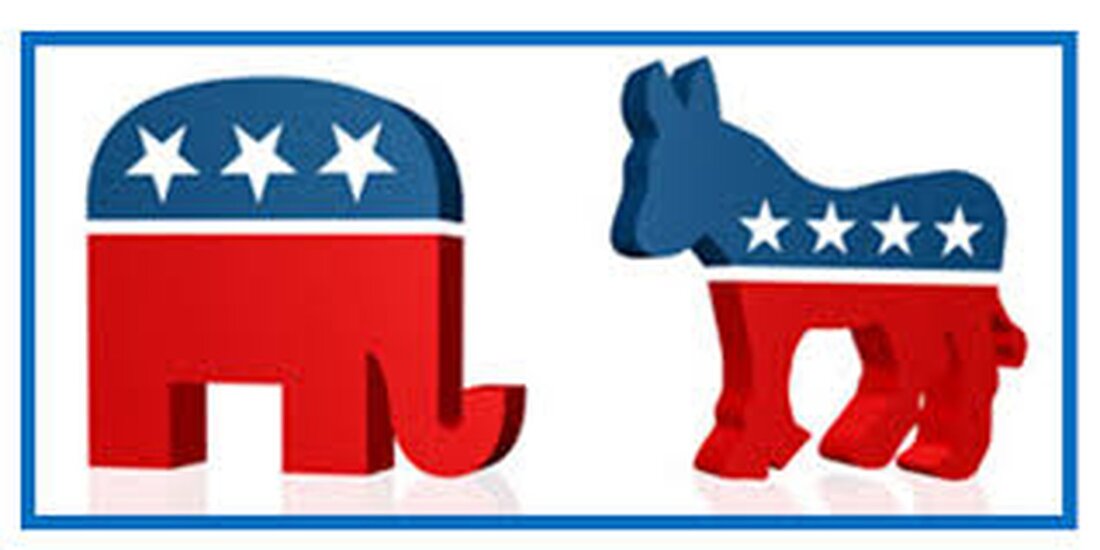

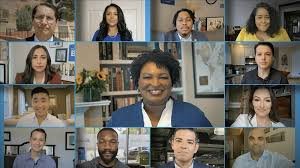




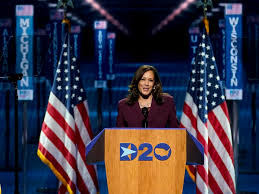
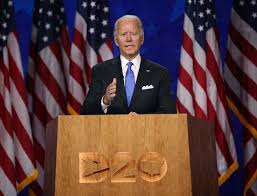


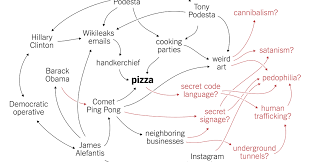

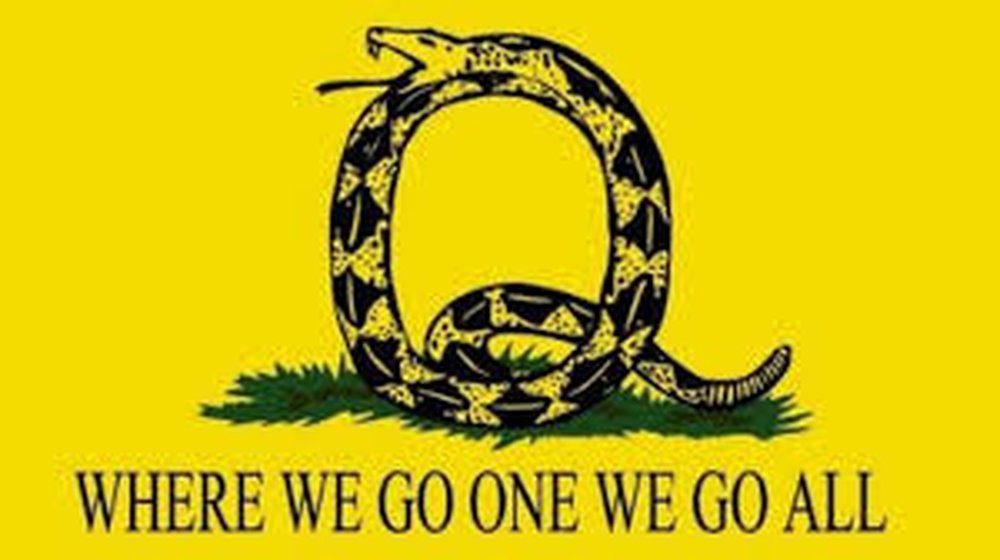
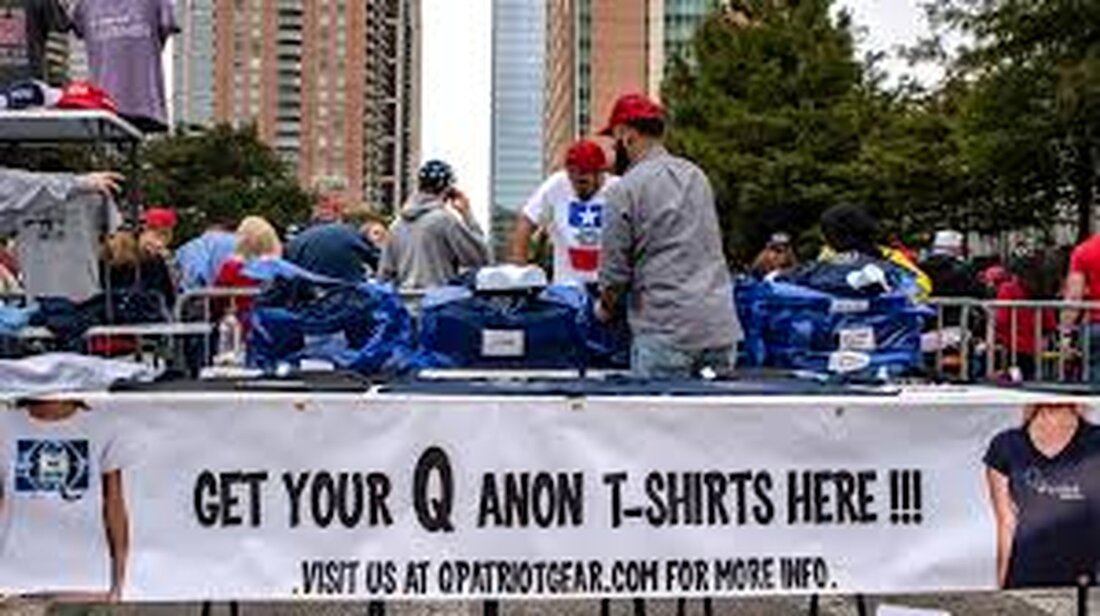
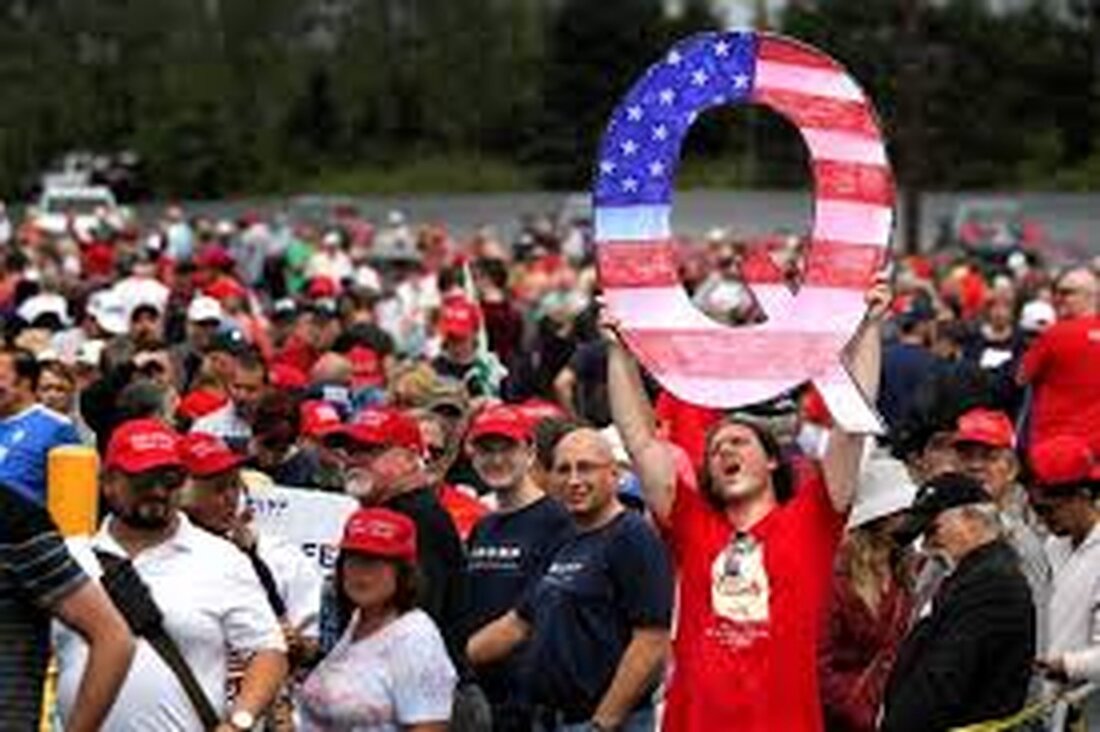



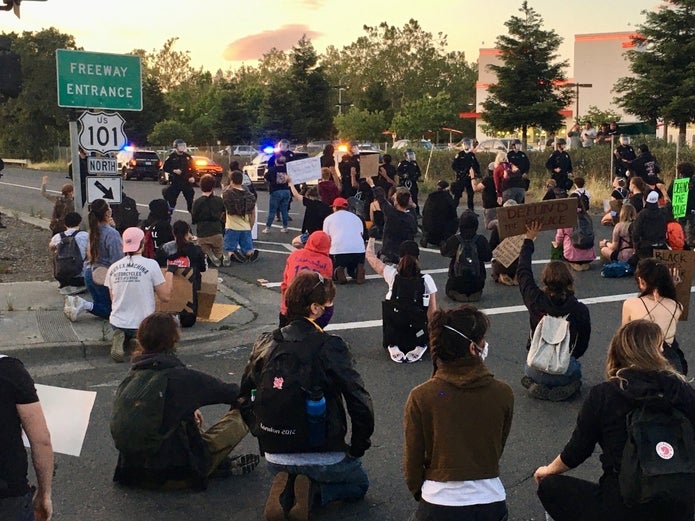


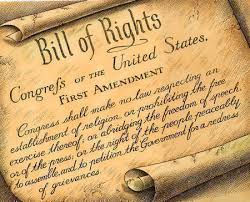
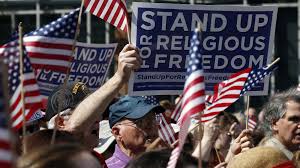
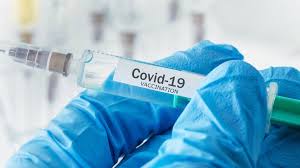

 RSS Feed
RSS Feed